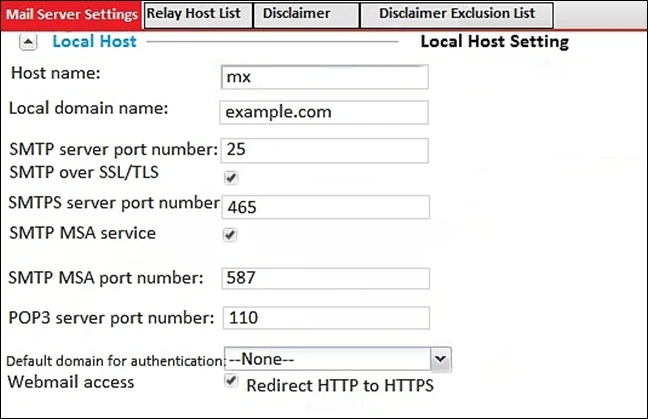To enable DKIM signing for outbound messages on FortiMail, you need to perform three key steps. First, you have to generate a public/private key pair in the protected domain configuration to create the necessary cryptographic keys. Second, you need to enable DKIM signing for outgoing messages in a matching session profile, which ensures that your outgoing emails are signed. Finally, you must publish the public key as a TXT record in a public DNS server so that receiving servers can verify the DKIM signature using the public key.

Which of the following statements are true? (Choose two.)
mx.example.com will display STARTTLS as one of the supported commands in SMTP sessions because it has SMTP over SSL/TLS enabled, which commonly uses the STARTTLS command to signify the capability to upgrade to a secure connection. Additionally, mx.example.com will accept SMTPS connections as it has an SMTPS server port number 465 configured, which is used explicitly for SMTPS.


Which of the following parameters are recommended for the Primary FortiMail's HA interface configuration? (Choose three.)
In an active-passive cluster configuration for FortiMail, the following parameters are recommended for the Primary FortiMail's HA interface: configuring the Peer IP address is essential to define the secondary unit's IP address, here it would be 172.16.32.57; setting the Heartbeat status to Primary ensures the device acts as the primary unit in the cluster; and specifying the Virtual IP address is necessary to define the shared IP address used by the cluster, which would be 172.16.32.55/24 in this case. Therefore, enabling port monitor or virtual IP action is not directly relevant in this context.
The command 'execute formatlogdisk' will erase all data on the log disk partition by formatting it. Additionally, the 'execute partitionlogdisk 40' command will repartition the log disk, which also results in erasing its data. These two commands specifically target the log disk partition and will erase its contents, making them the correct answers.

Which one of the following statements describes the Pre-registered status of the IBE user krayner@external.com?
The Pre-registered status indicates that the user was registered by an administrator in anticipation of IBE participation. This status means that the user has not yet completed the registration process or accessed their IBE email. The administrator has set up the account in preparation for the user's future activity.